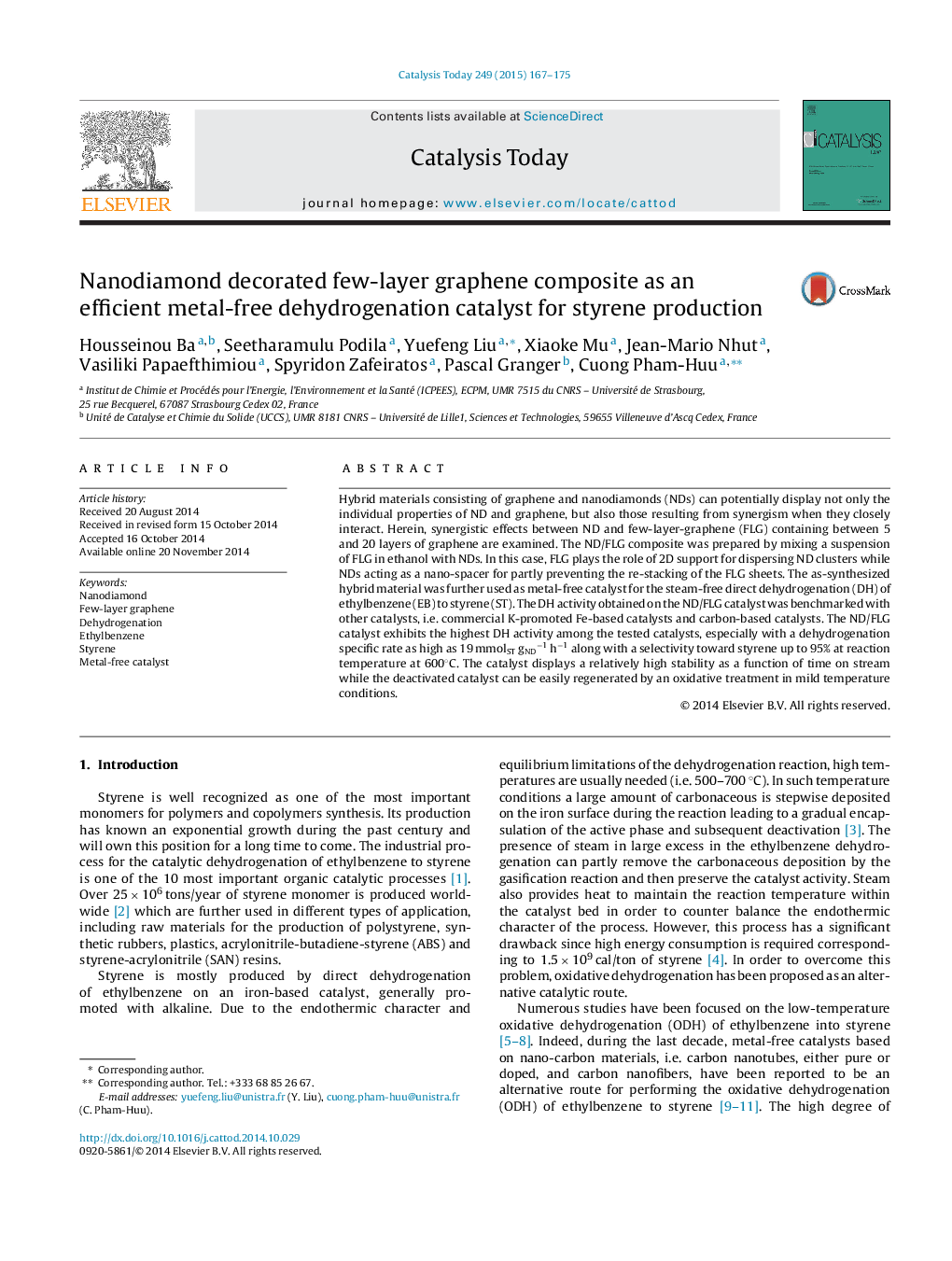| کد مقاله | کد نشریه | سال انتشار | مقاله انگلیسی | نسخه تمام متن |
|---|---|---|---|---|
| 53723 | 46981 | 2015 | 9 صفحه PDF | دانلود رایگان |

• Hybrid materials consisting of graphene and nanodiamonds have been prepared.
• Nanodiamonds are highly dispersed on the surface of few-layer graphene (FLG).
• It shows excellent activity and stability for the ethylbenzene dehydrogenation (DH).
• DH activity of 19 mmolST gND−1 h−1 with 95% styrene selectivity is obtained at 600 °C.
Hybrid materials consisting of graphene and nanodiamonds (NDs) can potentially display not only the individual properties of ND and graphene, but also those resulting from synergism when they closely interact. Herein, synergistic effects between ND and few-layer-graphene (FLG) containing between 5 and 20 layers of graphene are examined. The ND/FLG composite was prepared by mixing a suspension of FLG in ethanol with NDs. In this case, FLG plays the role of 2D support for dispersing ND clusters while NDs acting as a nano-spacer for partly preventing the re-stacking of the FLG sheets. The as-synthesized hybrid material was further used as metal-free catalyst for the steam-free direct dehydrogenation (DH) of ethylbenzene (EB) to styrene (ST). The DH activity obtained on the ND/FLG catalyst was benchmarked with other catalysts, i.e. commercial K-promoted Fe-based catalysts and carbon-based catalysts. The ND/FLG catalyst exhibits the highest DH activity among the tested catalysts, especially with a dehydrogenation specific rate as high as 19 mmolST gND−1 h−1 along with a selectivity toward styrene up to 95% at reaction temperature at 600°C. The catalyst displays a relatively high stability as a function of time on stream while the deactivated catalyst can be easily regenerated by an oxidative treatment in mild temperature conditions.
Figure optionsDownload high-quality image (248 K)Download as PowerPoint slide
Journal: Catalysis Today - Volume 249, 1 July 2015, Pages 167–175